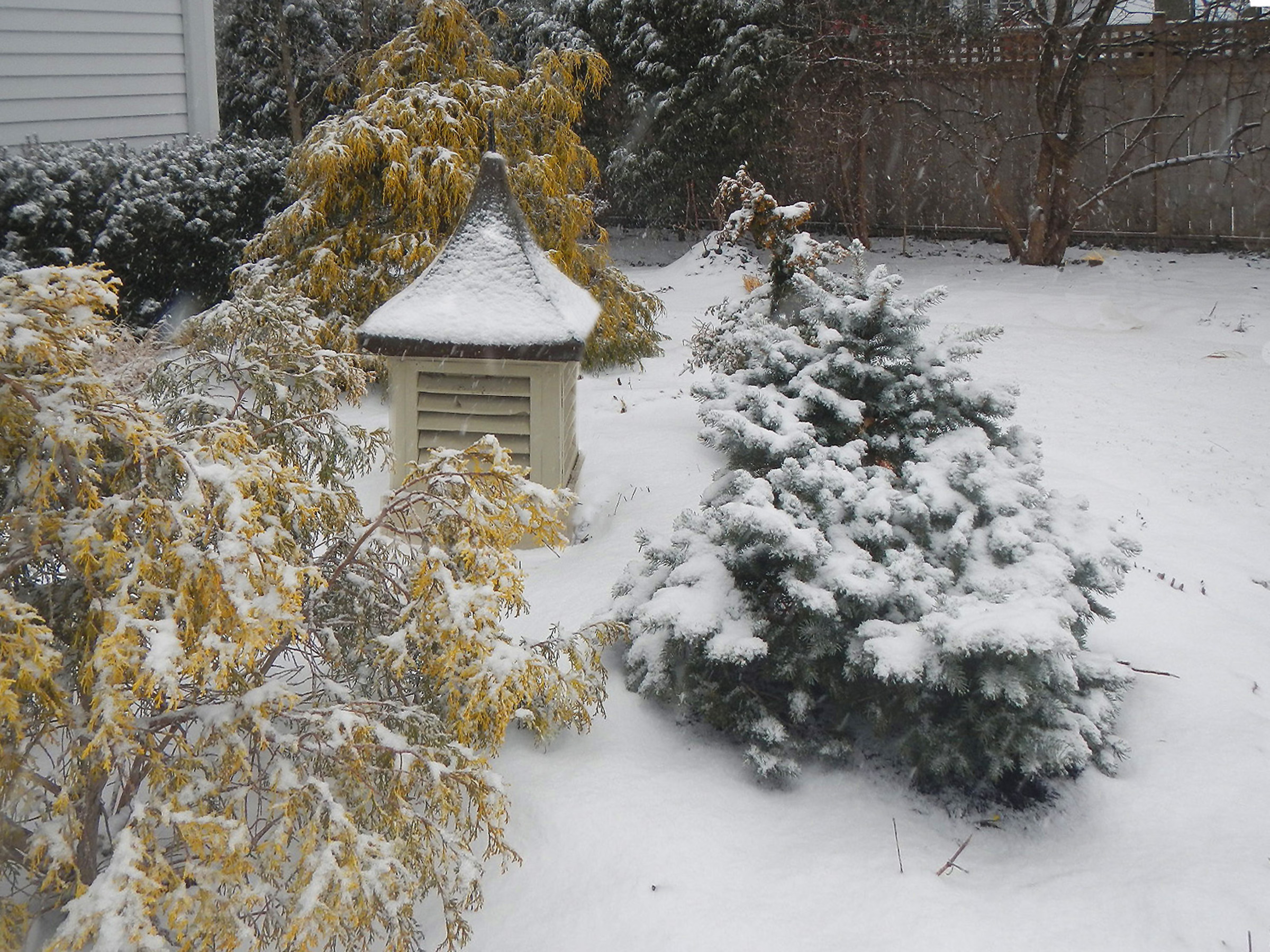Winter interest in your garden can be achieved in several ways. Planning requires careful consideration of your gardening space and your goals. When plants enter winter dormancy, evergreens generally retain the same form and color, while with deciduous plants, structural and textural characteristics become their main decorative feature. Grouping these structures and textures can ensure your garden’s beauty year-round.
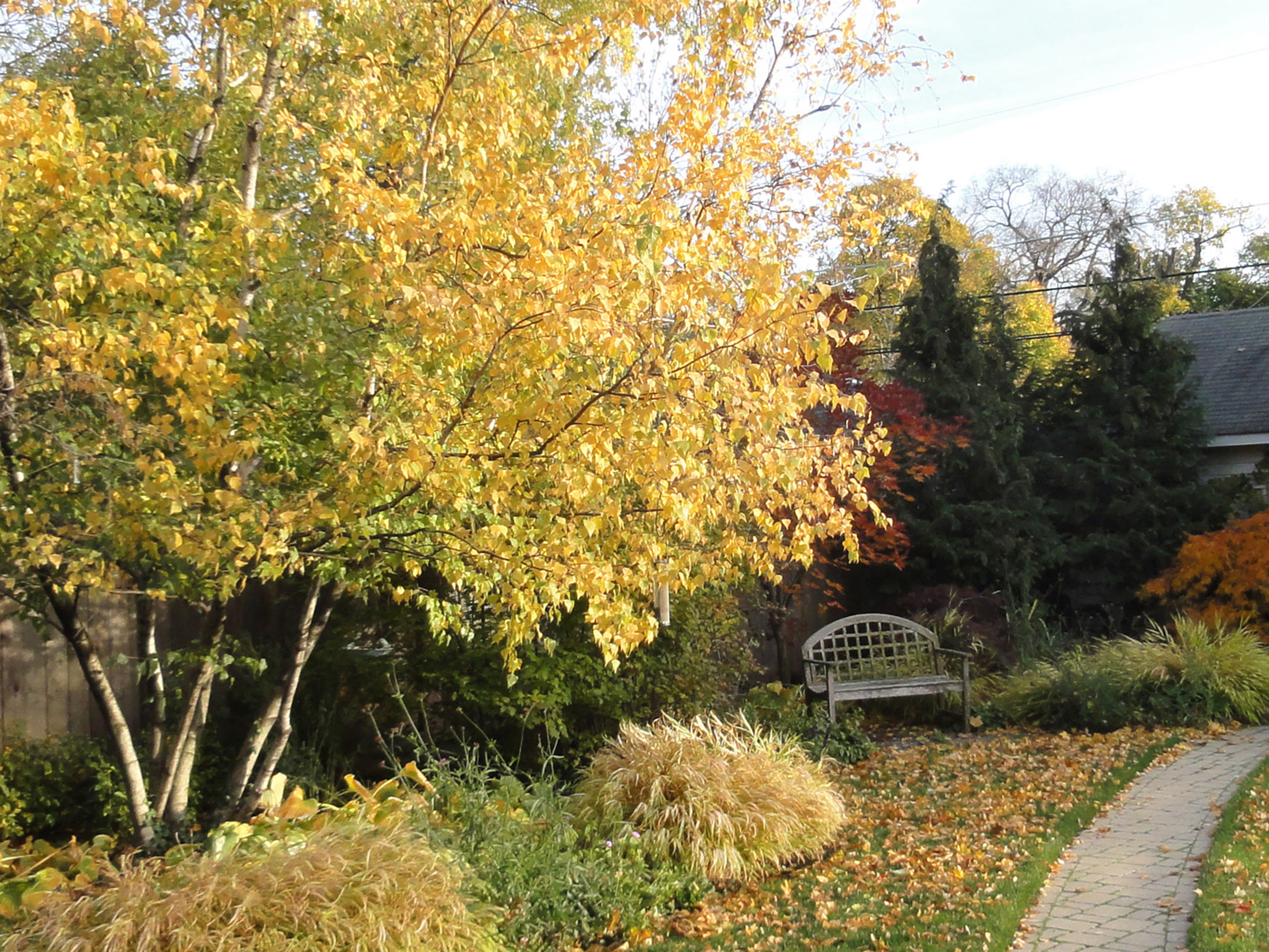
A fall garden scene, with fallen leaves and yellowing perennials. A clump white birch offers golden fall color, while Green Giant Arborvitae screen the garage and provide a soft backdrop for a pond.
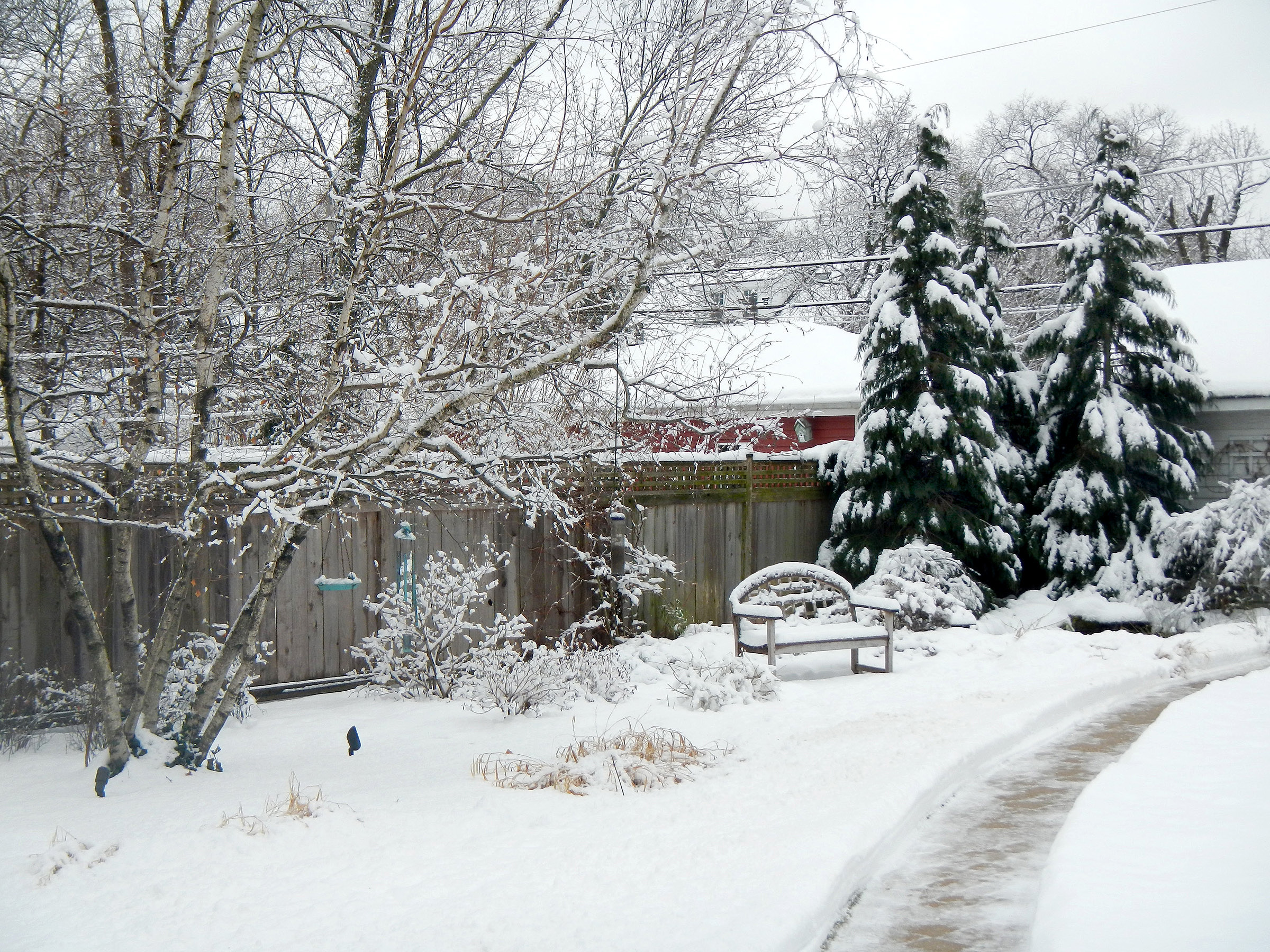
The same garden in winter. Snow blankets the entire space, but the white birch and tall arborvitae stand out with seasonal interest.
Perennials & Ornamental Grasses
An overlooked layer of winter interest is the layer of perennials and grasses that can maintain structure through late fall and winter snowstorms. In addition to adding another dynamic to your garden in normally dormant times, selecting the right plant can provide a cover and a winter food source for birds.
While ornamental grasses can be cut back in the fall, leaving them through the winter is advantageous. Some good ornamental grasses are maiden grass, switchgrass and prairie dropseed, which offer vertical structure, soft texture and movement in the winter garden. Some good perennial examples are tall sedum, blackeyed susan and purple coneflower.
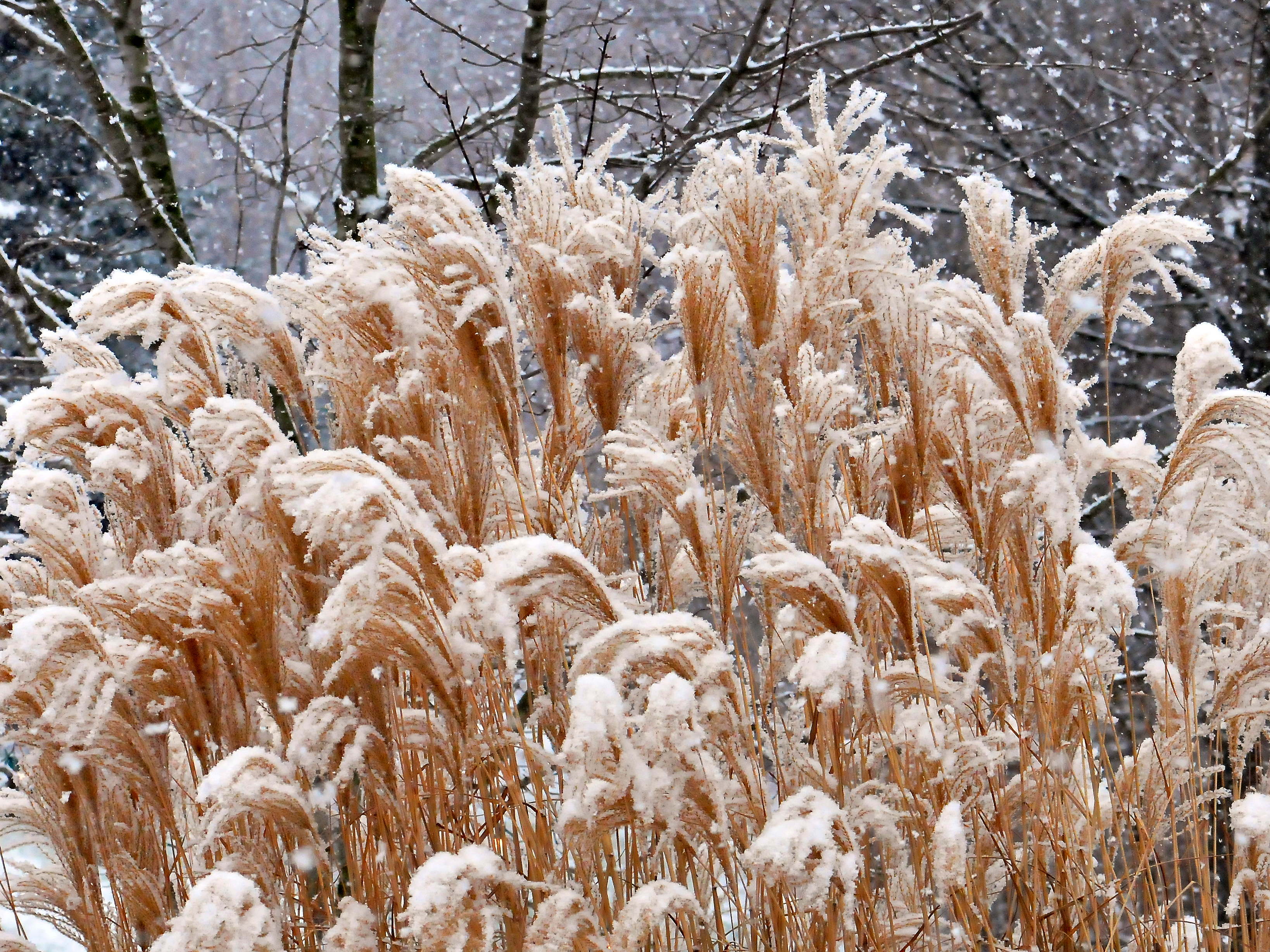
Left to overwinter, the interesting texture of dried leaf blades and plumes of maiden grass capture snow. Photo credit: Judy Johnson.
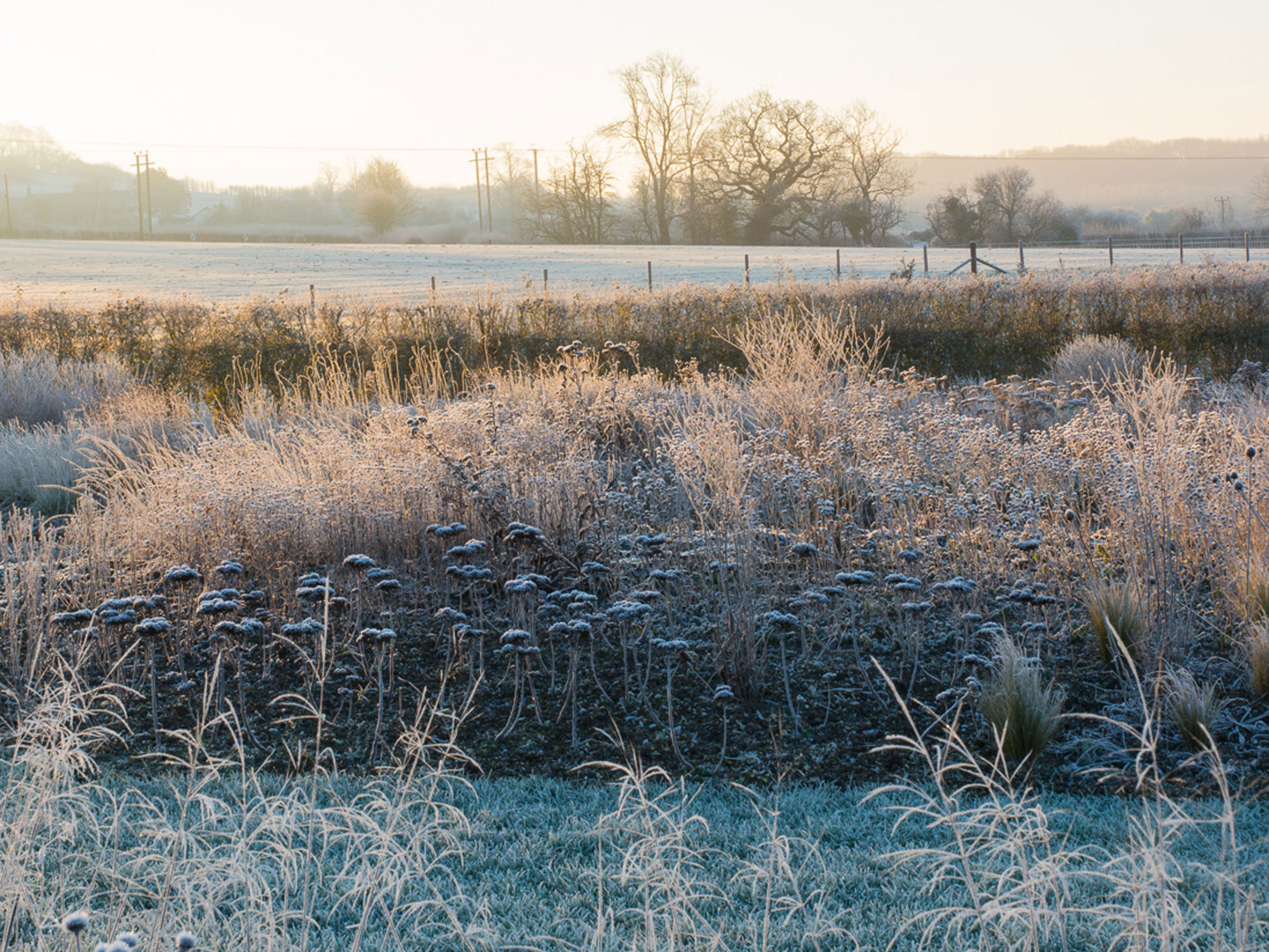
Snow-dusted Matrona Sedum stands out in a perennial planting designed by Piet Oudolf, who also designed Chicago’s Lurie Garden. Photo credit: Heather Edwards.
Deciduous Trees & Shrubs
Winter interest can also be accomplished using deciduous trees and shrubs. Similarl to perennials and evergreens, the structure of deciduous plants can be used as an accent piece during winter months. Bark color and texture, in addition to the presence of fruit, can contribute a variety of options for winter interest.
River birch and paperbark maple are trees with exfoliating bark, while kousa dogwood and stewartia bark is colorful and mottled in appearance. The shaggy, whitish tan bark of Seven Son Flower Tree is unusual.
Trees and shrubs that have berries in winter add not only color to a garden but also attract birds. Crabapple trees like ‘Prairifire’, Sugar Tyme’ and ‘Red Jewel’ bear fruit that stay on in winter months. Chokeberry is a shrub with red or black fruit that also hang on in winter. Winterberry is a deciduous holly with leaves that turn golden yellow and red berries that appear in the fall. After leaves drop, the berries stay on through winter.
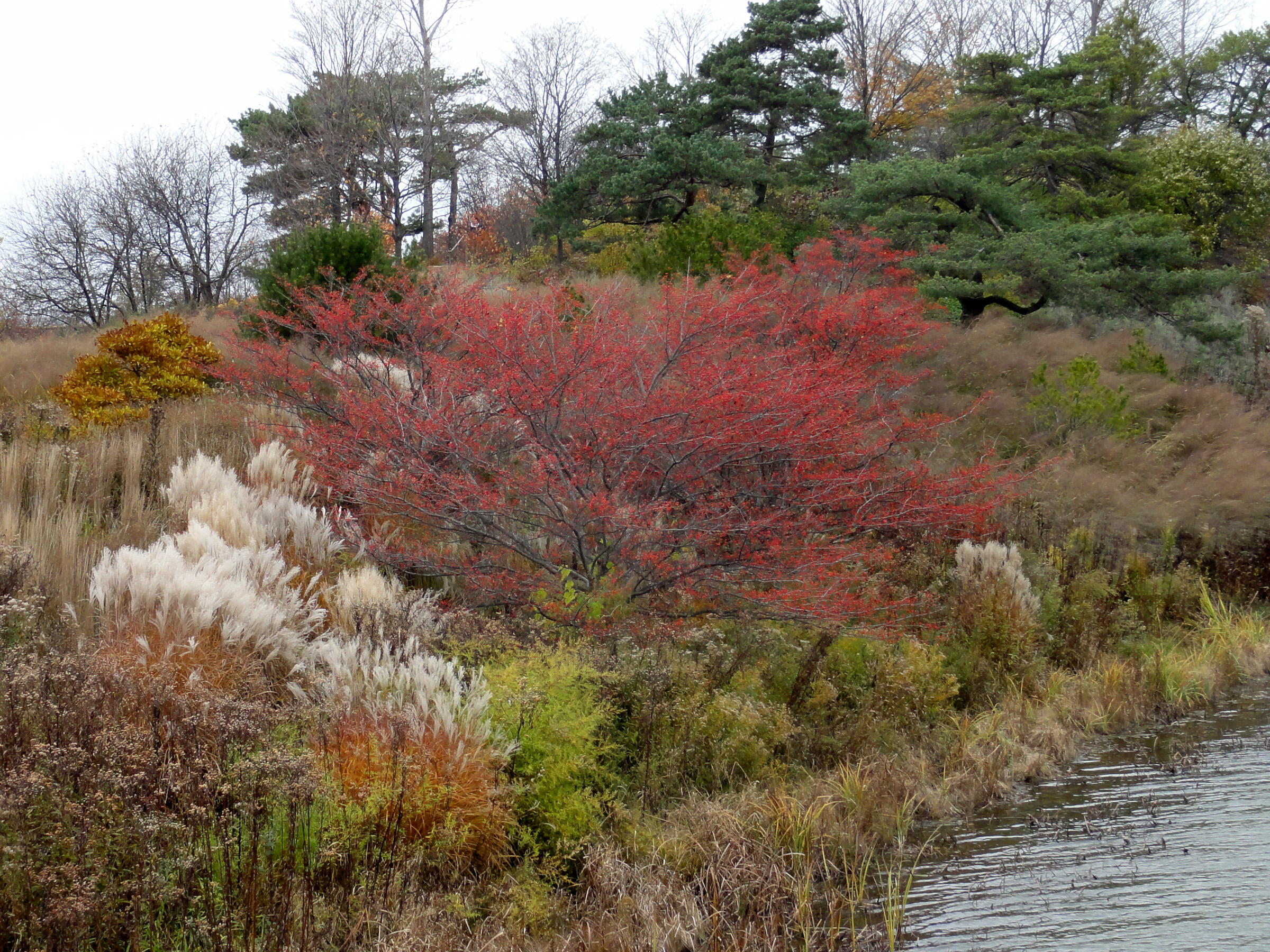
Photographed in November at the Chicago Botanic Garden, a Winter King Hawthorn displays red berries that persist through winter, providing food for birds.

Winterberry featured at the Chicago Botanic Garden, with golden fall color and red berries that stay on in winter and are eaten by birds.
Evergreen Trees & Shrubs
Evergreen trees and shrubs keep your yard from looking bare throughout the winter months by maintaining their leaves all year. Evergreens are a staple of winter interest, providing interesting foliage and contrast against plants with color change in the fall, and becoming a resting place for snow in the winter.
The traditional deep green color of boxwood, yew, holly and arborvitae stand out in a snow filled rear landscape. Spruce and juniper are available with blue, golden-green and green foliage. Falsecypress is yet another unique evergreen offering more variety in foliage shape and color. As their common names suggest, threadleaf falsecypress has stringy, scaly foliage and fernspray cypress has fern-like foliage. Hinoki falsecypress foliage is shaped like coral.

